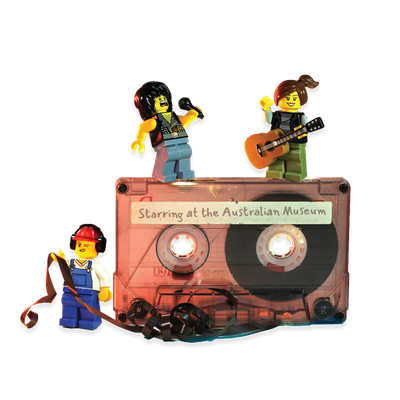Your search returned 38 results
By Page Type
By Tag
- All
- fish (966)
- blog (698)
- fishes of sydney harbour (400)
- First Nations (293)
- Blog (236)
- AMRI (169)
- archives (165)
- Aboriginal and Torres Strait Islander (135)
- Eureka Prizes (131)
- insect (126)
- Ichthyology (125)
- geoscience (109)
- minerals (102)
- climate change (98)
- podcast (94)
- Fish (91)
- Anthropology (89)
- International collections (80)
- Minerals Gallery (78)
- wildlife of sydney (78)
- Labridae (77)
- frog (73)
- gemstone (70)
- history (63)
- photography (63)
- staff (61)
- Mollusca (60)
- gem (59)
- Birds (58)
- education (57)
- Gems (56)
- Indonesia (56)
- AMplify (54)
- shark (54)
- people (53)
- exhibition (51)
- earth sciences (50)
- past exhibitions (50)
- Gobiidae (48)
- Pomacentridae (45)
- sustainability (45)
- Serranidae (44)
- science (43)
- lifelong learning (42)
- Earth and Environmental Science (41)
- Syngnathidae (41)
- Ancient Egypt (40)
- Bali (40)
- bird (40)
- dangerous australians (40)
-
Preparation for death - Dorin Hart
https://australian.museum/about/history/exhibitions/death-the-last-taboo/preparation-for-death-dorin-hart/A celebration of Ralf's life at a home funeral, told by Dorin Hart.
-
Burial - Pukumani, Tiwi Islands
https://australian.museum/about/history/exhibitions/death-the-last-taboo/burial-pukumani-tiwi-islands/For the Tiwi people of Bathurst and Melville Islands, Pukumani means taboo and applies to the funeral ceremonies, the possessions of the deceased, the close relatives of the deceased and the gravesite.
-
Burial - Malagan ceremony, New Ireland
https://australian.museum/about/history/exhibitions/death-the-last-taboo/burial-malagan-ceremony-new-ireland/The people of northern New Ireland, Papua New Guinea, honour the dead through Malagan ceremonies. These ceremonies assist the souls of the dead to pass into the spirit world.
-
My options after death
https://australian.museum/about/history/exhibitions/death-the-last-taboo/my-options-after-death/The options currently available to people in Australia after their deaths are burial (in the earth or water) and cremation. There are many variations on the type and cost of the container and the final destination for the body or ashes.
-
Body disposal - legal procedures
https://australian.museum/about/history/exhibitions/death-the-last-taboo/body-disposal-legal-procedures/Certain procedures must be carried out in order to dispose of a human body, including arranging for a funeral, certifying that a person is dead and what the cause of death was, as well as registering the death.
-
Who ends up in a morgue?
https://australian.museum/about/history/exhibitions/death-the-last-taboo/who-ends-up-in-a-morgue/Of the 128 500 people who die in Australia every year, only 13.4% of deaths are referred on to the coroner's office and even fewer will require a coronial investigation and autopsy. Not all deaths need to be investigated. There are a variety of reasons why a death might be reported to the coroner.
-
Mourning - Oro Province, Papua New Guinea
https://australian.museum/about/history/exhibitions/death-the-last-taboo/mourning-oro-province-papua-new-guinea/For the people of Collingwood Bay in Oro Province, north-east Papua New Guinea, death was associated with elaborate mourning rituals and the wearing of specific mourning attire.
-
Death masks
https://australian.museum/about/history/exhibitions/death-the-last-taboo/the-face-of-death/Death masks show the subject's facial expression immediately after death. It was important to make death masks quickly, before the features became distorted.
-
Find out more
Tails from the Coasts
Special exhibition
On now![]()
-
Find out more
Burra
Permanent kids learning space
10am - 4.30pm![]()
-
Discover more
RELICS
Special Exhibition
Opens 16 August 2025![]()
-
Discover more
Minerals
Permanent exhibition
Open daily![]()





